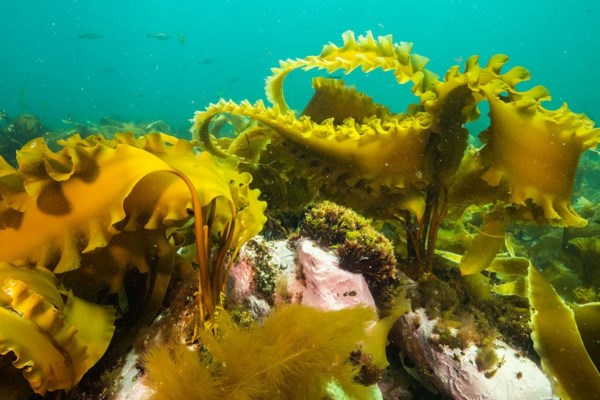According to a new study, kelp (seaweed) is useful not only for health, but also for the balance of acidity of water in the ocean. This alga is able to reduce the negative effect of carbon dioxide and water acidification on marine fauna, including residents of oyster farms.

Seaweed, or kelp (for example, sugar kelp Saccharina latissima) is a rather primitive organism from the group of brown algae. There is a lot of it in a variety of seas, where wide laminaria layers sometimes reach a length of 20 meters. They are actively harvested and used as raw materials for the production of healthy food and food additives.
According to a new article in Frontier’s in Marine Science, kelp is also able to heal its habitat, the ocean, namely, to resist its acidification. This is important, among other things, due to the danger to mariculture (the cultivation of edible marine animals), primarily oysters and other bivalves.
A drop in the pH of oceanic waters, which usually have an alkaline reaction, is associated with a number of dangers for the inhabitants of marine ecosystems and the biosphere as a whole. For bivalves, many gastropods and other owners of calcareous shells, this is fraught with partial dissolution of their “home”. In addition, in a more acidic environment, it is more difficult for young individuals to create such a shell.
It is known that many mass extinctions of the past (for example, the Great Permian extinction) were accompanied by significant ocean acidification. It was largely the cause of the extinction of species. Something similar is happening on Earth now.
It is important to understand that changes in the chemical composition of the ocean are inextricably linked with other global processes, primarily with an increase in the level of carbon dioxide in the atmosphere. When there is more carbon dioxide in the air, it dissolves more actively in water and forms ions with acidic properties, which slightly reduces the pH of the oceans. Since the beginning of the new millennium, it has been known that an increase in the concentration of carbon dioxide in the surface layers of the ocean has become a real threat to shellfish.
The problem is particularly acute in coastal areas, where this acid oxide comes from the land. It is there that many oyster cans are located and farmers engaged in mariculture work, who breed shellfish and other invertebrates intended for sale.
As part of the fight against water acidification and other environmental problems, scientists propose “underwater landscaping”, that is, the creation of new thickets, such as sea grasses or kelp. It turns out that the accumulation of seaweed slows down the pH of seawater (its acidification), and the cultivation of kelp in the waters of oyster farms even allows you to locally neutralize the increase in acidity, thereby protecting shellfish and promoting their rapid growth. Kelp plantings are also such additional advantages as the exclusion of carbon and nitrogen compounds from the cycle, which may be associated with negative effects on the climate, as well as the prevention of blooming of the sea caused by dangerous microalgae.
“Despite the ongoing development of mariculture, the rapid acidification of the ocean is already threatening the cultivation of bivalves and requires our intervention. We are convinced that our work will become the basis for a possible solution,” concluded Professor Christopher Gobler from Stony Brook University (USA).
